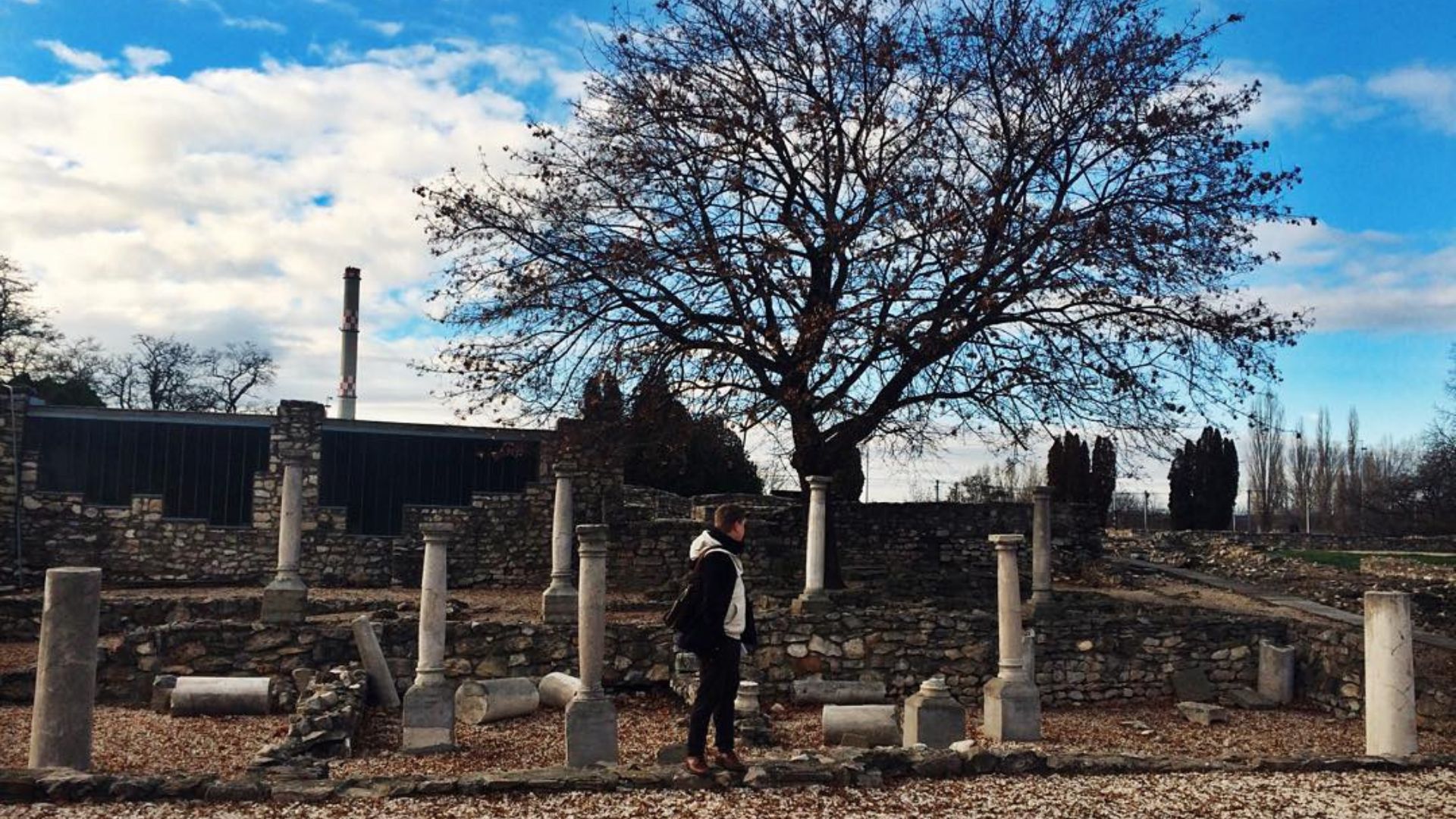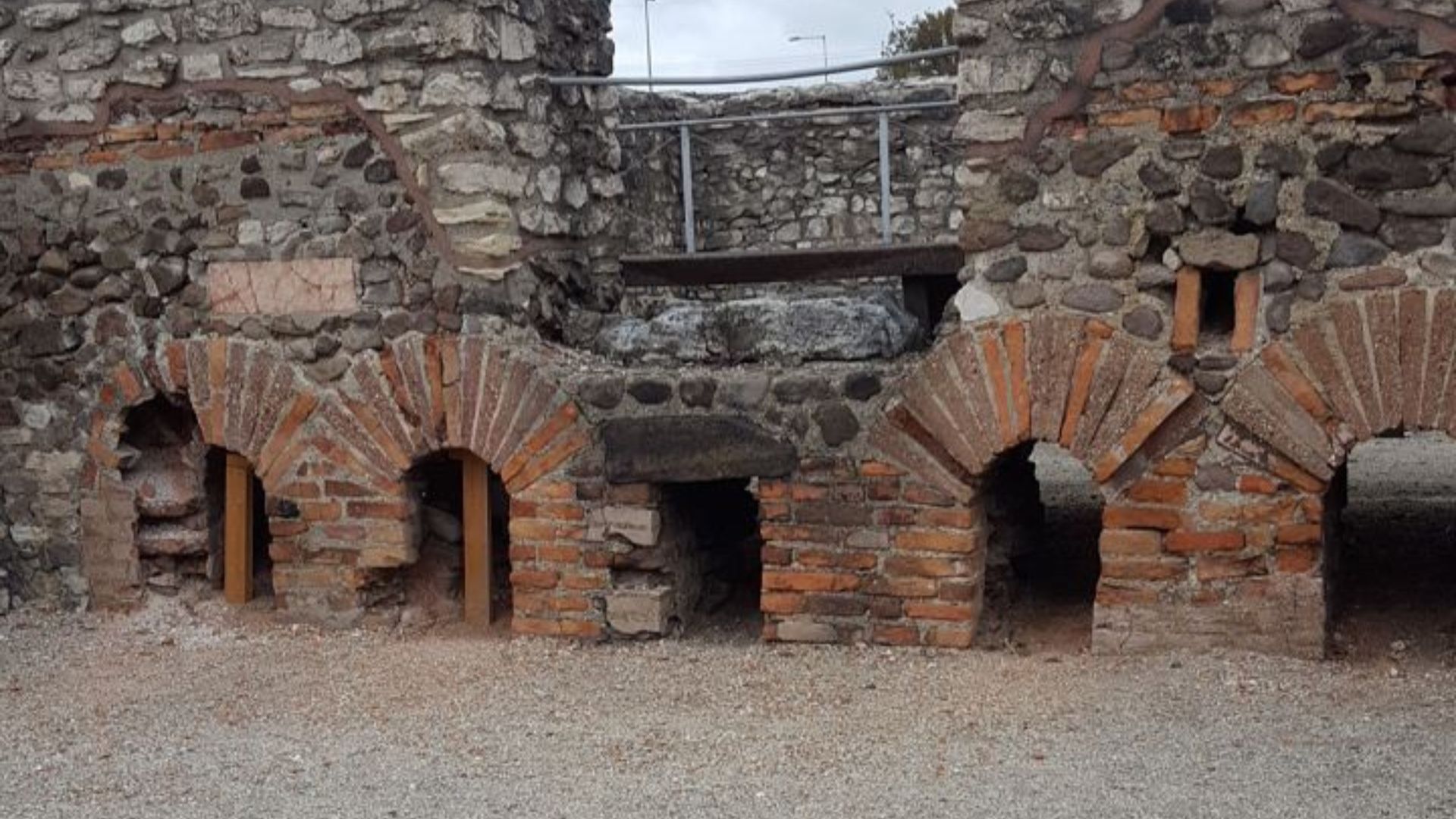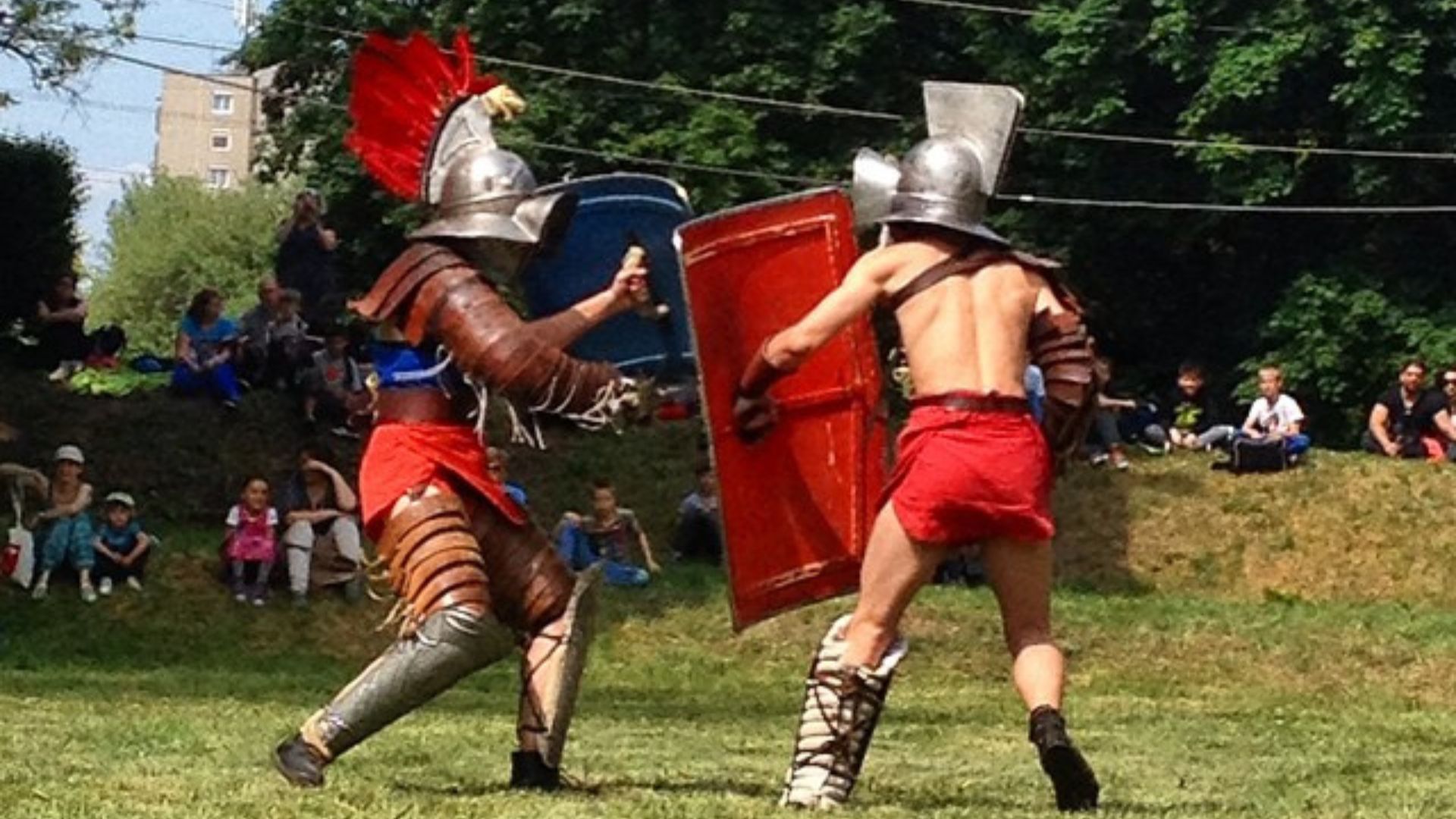Explore the captivating ruins of Aquincum Museum, where ancient Roman history comes alive amidst the bustling modernity of Budapest.

Highlights
- Step into the ancient amphitheater and visualize the vibrant Roman spectacles that once captivated crowds.
- Explore the intricately designed frescoes and mosaics that depict daily life in Roman times.
- Wander through the reconstructed ruins and imagine the bustling activity of the once-thriving Aquincum city center.
Tickets & Prices
General admission tickets cater to adults, students, pensioners, and families, with special rates for groups. If you are interested in exploring more, the BHM+ Ticket offers a month-long comprehensive pass to several Budapest History Museum institutions.
Discounts are available for students, pensioners, and families, with free admission offered to children under six, disabled visitors with a companion, and residents from Budapest’s District 3, among others. Additionally, on Hungarian national holidays and the last Saturday of each month, certain visitors can enjoy complimentary entry.
For those interested in educational experiences, the museum offers classes, including arts and crafts, for groups that book in advance. Remember that discounts cannot be combined, and eligibility must be declared beforehand, with appropriate identification presented if required.
Tours
Guided tours at the Aquincum Museum are available in English, French, and German from Tuesday to Friday. Reservations should be made at least seven working days in advance by contacting [email protected]. For groups larger than 30, division into smaller subgroups is required. Tours can be arranged on other days or in different languages by reaching out via the same email.
Accessible tours designed for visitors with physical disabilities are also offered at no cost for both the visitor and one companion on weekdays. For individuals interested in more specialized experiences, the museum provides Roman walking and bicycle tours in Óbuda, which cover historic sites like the legionary fortress and amphitheater, requiring a minimum of seven participants.
Additionally, tours of the Hercules Villa, showcasing Roman-era mosaics and wall paintings, are available with prior arrangements. All tours must be conducted by authorized Aquincum Museum staff or permit holders, and various payment methods are accepted.
Opening Hours
The Aquincum Museum is open from Tuesday to Sunday, with varying hours depending on the season. During the summer months (April 1 to October 31), visitors can explore the exhibitions from 10:00 to 18:00 and the Archaeological Park from 9:00 to 18:00, with the last entry at 17:30.
In winter (November 1 to March 31), both the exhibitions and the park are accessible from 10:00 to 16:00, though the park’s winter opening is contingent on favorable weather conditions. The museum remains closed on all Mondays throughout the year.
Special holiday openings include key dates like National Day and Easter Monday, while it remains closed on days such as All Saints’ Day and Christmas. Notably, the museum hosts unique events like the Night of Museums on June 22 and Samhain on October 31, both starting at 16:00.
What to see and do
Here are some things to do at the Aquincum Museum that will immerse you in the rich history of ancient Roman life.
Explore the Archaeological Park

Walking through the Archaeological Park in Aquincum feels like stepping back in time. The ruins here tell tales of an ancient Roman city that once buzzed with life. You can wander down cobblestone streets, peer into the remnants of old houses, and marvel at public buildings like baths and marketplaces, imagining the hustle and bustle of daily Roman life.
One of the most fascinating aspects of the park is the well-preserved floor heating systems. These ancient underfloor heating systems, or hypocausts, were engineering marvels of their time. Coupled with the intricate water management infrastructure, these features highlight the Romans’ advanced understanding of architecture and utility.
Wear comfortable shoes. The surfaces are as ancient as they appear—uneven, but they add to the charm of your adventure. If you’re not a fan of crowds, aim for a visit in spring or fall when the weather is pleasant and the site is quieter. Trust me, you’ll want the space to explore at your own pace.
Visit the Aquincum Museum Exhibits

Inside the Aquincum Museum, the “Rome in Aquincum” exhibit is a treasure trove of artifacts. You’ll see restored mosaics that glint like jewels under soft lighting, intricate wall paintings that narrate stories from centuries ago, and monumental statues that once graced the governor’s palace. It’s a tangible connection to a world that’s long passed.
A piece you won’t want to miss is the Aquincum Organ. This unique 2nd-century instrument is the oldest known water organ and is a testament to Roman innovation. They’ve even reconstructed it, and on special occasions, you might catch a performance. It’s like hearing whispers of music played centuries ago, echoing through time.
Engage with Interactive Displays
Modern technology meets ancient history with the museum’s virtual reality stations. These allow you to visualize Aquincum as it once was, bustling with life and color. It’s like having a time machine at your fingertips!
To anyone who enjoys getting hands-on, the museum offers workshops where you can try your hand at Roman crafts. Perfect for families and school groups, these activities make history come alive in a fun and engaging way.
These hands-on activities are particularly popular, so check the schedule ahead of time to secure your spot. It’s a fantastic opportunity to leave with a handmade memento of your Roman adventure.
Discover the Mithraeum (Temple of Mithras)

Tucked within a townhouse in ancient Aquincum lies the Mithraeum, a temple dedicated to the Roman god Mithras. This sacred space offers a glimpse into the spiritual life of the Romans, where mystery cults played a significant role.
The Mithraeum is conveniently accessible within the Archaeological Park, just south of the museum building. It’s a hidden corner that many visitors might overlook, but it’s well worth the short detour. You’ll feel like you’ve stumbled upon a secret piece of history.
Attend Special Events and Festivals

If you’re lucky enough to visit during the spring, you might catch the Floralia Festival. This annual event is a colorful celebration of Roman traditions, complete with reenactments and a host of engaging activities. It’s like stepping into a Roman festival, complete with all the fanfare.
And don’t worry if your travel dates don’t align with Floralia—Aquincum hosts other seasonal events throughout the year. Checking the museum’s calendar is a great way to plan your visit. You might find workshops or family programs that add an extra layer of fun to your historical exploration.
Fun Fact: Romans were known for their elaborate festivals, and Aquincum’s modern-day celebrations strive to capture that same spirit. It’s not just a festival—it’s a chance to live, if only for a moment, in the world of ancient Rome.
Directions
To reach the Aquincum Museum by public transportation, you can take the Suburban Railway Line H5 from Batthyány tér towards Szentendre and alight at the Aquincum station. After alighting, turn right and walk around 500 meters to the museum entrance.
Alternatively, bus lines 34, 106, and 134 from Szentlélek tér H stop at Záhony Street, with Line 34 running every 10 minutes and taking approximately 8 minutes to reach Aquincum H stop. Train services S76 and Z72 from Nyugati Railway Station also stop at Aquincum station.
If you prefer cycling, access the museum via cycle paths on Szentendrei Road or Ángel Sanz Briz Road from the south or Sujtás Street or Gázgyár Street from the north, with bicycle parking available near the entrance.
Remember to validate your public transport tickets before boarding, and note that Budapest travel passes cover the HÉV within city limits, eliminating the need for an extra ticket to Aquincum. For real-time navigation, apps like Moovit can be quite handy.
Nearby Places
Vasarely Museum Budapest: Nestled within the elegant Zichy Palace, this museum celebrates the works of Victor Vasarely, the pioneering figure of the op-art movement, with captivating displays of his geometric and optical illusion masterpieces.
Óbuda Old Town: A delightful historic district close to the Aquincum Museum, Óbuda is known for its picturesque streets and charming Baroque architecture, offering a perfect spot for a leisurely daytime stroll.
Római Part (Roman Beach): This vibrant riverside promenade along the Danube invites visitors to enjoy leisurely walks, cycling, or dining at open-air restaurants, with options for kayaking and boat rentals for the adventurous.
Aquincum Civil Amphitheatre: A fascinating Roman-era site near the Aquincum Museum, the amphitheater once hosted grand public events and gladiatorial games, providing visitors a glimpse into ancient entertainment.
Kassák Museum: Located in Óbuda, this museum honors Lajos Kassák, a key figure in Hungarian avant-garde art, showcasing his innovative writings and artworks that contributed significantly to modernist movements.
Did You Know That: (5 Interesting Facts!)
- Aquincum was once a thriving Roman city, complete with public baths, a marketplace, and even an amphitheater. Imagine strolling along streets once bustling with toga-clad Romans in the heart of what’s now Budapest.
- The Aquincum Museum includes a fascinating collection of water organ remains. This early form of a musical instrument used water pressure to create sound—a testament to Roman innovation and entertainment.
- The site features one of the best-preserved Roman military amphitheaters in Europe. Its ruins whisper stories of ancient spectacles, from gladiator games to dramatic performances.
- Aquincum was divided into two parts: the civilian town and the military camp. This division reflects its strategic importance as a frontier city in the Roman Empire, bustling with soldiers and civilians alike.
- The museum sits where the Roman city once thrived over 1,800 years ago, offering a rare glimpse into the daily lives of its ancient inhabitants through artifacts like pottery, tools, and jewelry.
History
- AD 89: The Roman city of Aquincum is established as a military camp under Emperor Domitian, marking the beginnings of what would become a bustling settlement.
- 2nd Century AD: Aquincum flourishes as the capital of the Roman province of Pannonia Inferior, becoming a vital military and trade hub with an estimated population of 30,000.
- 4th Century AD: The decline of Roman power sees Aquincum gradually abandoned as the military focus shifts, leaving behind an array of ruins.
- 1778: Ignác Schönvisner, a Hungarian Jesuit scholar, conducts the first modern archaeological excavations, unearthing remnants of Aquincum’s amphitheater and public baths.
- 1880: The Aquincum Museum is officially founded, housing artifacts and relics from the Roman era, offering a window into the past.
- 1894: The museum opens its doors to the public, showcasing a collection of Roman artifacts, including mosaics, sculptures, and everyday items.
- 1931: Significant expansion efforts begin to protect and display the archaeological site, including the reconstruction of parts of the Roman city.
- 1960s: Further excavations and restorations enhance the museum’s collection, providing a more comprehensive view of ancient Roman life in the region.
- 2000s: Modern technology is employed to create interactive exhibits, bringing ancient Aquincum to life for visitors in innovative ways.
- Present Day: The Aquincum Museum stands as a testament to Budapest’s rich historical tapestry, inviting visitors to explore the remnants of a bygone era amidst its carefully preserved ruins and engaging exhibits.
FAQ
What is the Aquincum Museum, and why should I visit it?
The Aquincum Museum is a fascinating archaeological site located in Budapest, showcasing the ancient Roman city of Aquincum. Visiting this museum allows you to explore well-preserved ruins, artifacts, and interactive exhibits that bring the ancient world to life. It’s a unique opportunity to step back in time and learn about the rich history and culture of Roman Hungary.
Are there any facilities or amenities available for visitors at the Aquincum Museum?
The Aquincum Museum provides several facilities for visitor comfort, including restrooms, a gift shop, and a café where you can enjoy refreshments. Additionally, there are educational resources and activities suitable for families and school groups, making it a great destination for visitors of all ages.
Map & Address
Aquincum Museum is located at Szentendrei út 135, 1031 Budapest, Hungary.
